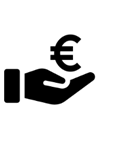Risk-On—But Keep the Umbrella Handy
 US equities are now within a stone’s throw of all-time highs after a strong May. Yet uncertainty still looms: Trump’s trade policy remains as erratic as ever, bonds—once the go-to “safe assets”—are proving volatile, signs of softer demand are emerging, and the risk of an inflation spike hasn’t disappeared.
US equities are now within a stone’s throw of all-time highs after a strong May. Yet uncertainty still looms: Trump’s trade policy remains as erratic as ever, bonds—once the go-to “safe assets”—are proving volatile, signs of softer demand are emerging, and the risk of an inflation spike hasn’t disappeared.
In short, there’s no shortage of potential problems—but none have fully materialised. It’s a timely reminder that, amid all the angst, the biggest risk for investors is often being out of the market.
 Last week brought another twist in the tariff saga, as a US court ruled that Trump had overstepped his authority. The case was brought by small importers and several states citing economic harm. However, the Administration filed an appeal, and tariffs have been reinstated while that process plays out.
Last week brought another twist in the tariff saga, as a US court ruled that Trump had overstepped his authority. The case was brought by small importers and several states citing economic harm. However, the Administration filed an appeal, and tariffs have been reinstated while that process plays out.
Impact: Nothing changes for now—but the ruling could weaken Trump’s negotiating hand, as trading partners may feel emboldened by the US legal system working in their favour. Any hint of tariff relief is music to the market’s ears.
 Fixed interest—traditionally seen as a defensive asset class—remains volatile. US Treasuries snapped a four-week losing streak. The gain wasn’t large, but any sign of stability will be welcomed by bond investors. Just last week, long-dated Japanese yields hit record highs, reflecting waning appetite for long-term debt. However, speculation that the Ministry of Finance may cut issuance of long-dated bonds (i.e. reduce supply) triggered a sharp reversal—sending yields down and prices up.
Fixed interest—traditionally seen as a defensive asset class—remains volatile. US Treasuries snapped a four-week losing streak. The gain wasn’t large, but any sign of stability will be welcomed by bond investors. Just last week, long-dated Japanese yields hit record highs, reflecting waning appetite for long-term debt. However, speculation that the Ministry of Finance may cut issuance of long-dated bonds (i.e. reduce supply) triggered a sharp reversal—sending yields down and prices up.
Impact: Bonds continue to have a place in client portfolios, but a more selective approach will be key in today’s environment.
 Recent US economic data suggests consumers are becoming more cautious. The labour market is showing signs of softening, with slower hiring and a rise in persistent unemployment. More notably, Bank of America reports that the slowdown is now spreading beyond lower-income groups. At the same time, the savings rate is rising—indicating that households are spending less and saving more.
Recent US economic data suggests consumers are becoming more cautious. The labour market is showing signs of softening, with slower hiring and a rise in persistent unemployment. More notably, Bank of America reports that the slowdown is now spreading beyond lower-income groups. At the same time, the savings rate is rising—indicating that households are spending less and saving more.
Impact: While more significant problems may not show up in the data until later this year, these early signals deserve attention. Ongoing demand weakness could be supportive for bonds.
 Christine Lagarde is continuing her push to elevate the euro’s status as a global reserve currency. It’s a classic case of “never let a crisis go to waste,” with the EU aiming to capitalise on fading confidence in US policy stability. Europe needs to raise €1.5 trillion per year through 2028 to fund defence, green energy, and technology—so those looking to park capital in euro-denominated assets will have plenty of options. While headlines questioning the dollar’s dominance grab attention, the greenback’s reserve status isn’t under serious threat. Still, the direction of travel signals that the EU is comfortable with a strong euro—a bold position for an export-heavy economy.
Christine Lagarde is continuing her push to elevate the euro’s status as a global reserve currency. It’s a classic case of “never let a crisis go to waste,” with the EU aiming to capitalise on fading confidence in US policy stability. Europe needs to raise €1.5 trillion per year through 2028 to fund defence, green energy, and technology—so those looking to park capital in euro-denominated assets will have plenty of options. While headlines questioning the dollar’s dominance grab attention, the greenback’s reserve status isn’t under serious threat. Still, the direction of travel signals that the EU is comfortable with a strong euro—a bold position for an export-heavy economy.
Impact: Increased demand for euro-denominated assets could reduce borrowing costs for European governments and corporates. While supportive of the domestic economy, this may create a headwind for euro-based investors with significant global exposure.
